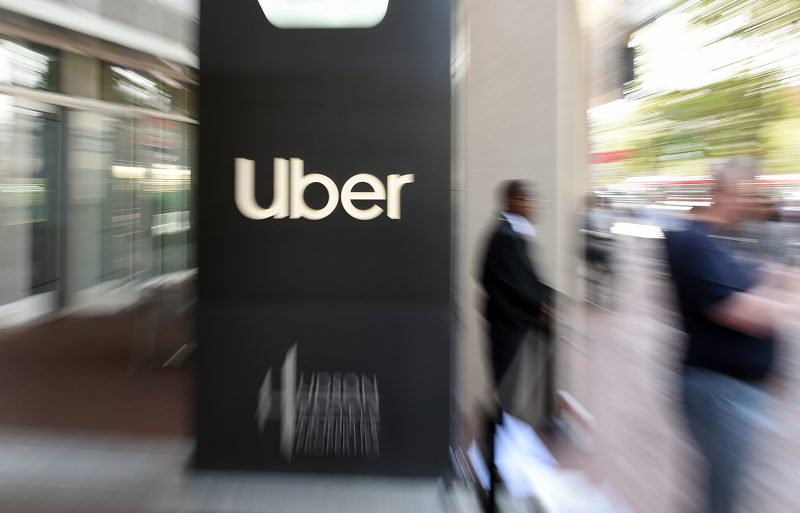In Wall Street debut, Uber set to turn a corner
Uber’s Wall Street debut is a milestone for the ride-hailing sector, but risks include complaints about its business model of using independent contractors, who protested this week over the revenue split between the drivers and the platform (Josh Edelson)
New York (AFP) – Uber is expected to reveal pricing Thursday for a massive share offering that is a milestone for the ride-hailing industry and the so-called “sharing economy,” but which comes amid simmering concerns about its business model.
San Francisco-based Uber was set to begin trading Friday on the New York Stock Exchange in one of the largest initial public offerings in the tech sector.
Depending on the pricing, Uber’s market value could be between $80 billion and $100 billion, a huge figure that reflects how it has disrupted the local transportation sector.
Analyst Daniel Ives of Wedbush Securities said Uber has the potential to be a transformative company and “is paving a similar road to what Amazon did to transform retail/ecommerce and Facebook did for social media.”
Ives said Uber has the potential to grow as it morphs its ridesharing platform “into a broader consumer engine with Uber Eats, Uber Freight, and autonomous initiatives.”
– Risks to new model –
But some of the risks surrounding Uber and its rivals were highlighted Wednesday as thousands of drivers turned off their apps in a US-wide strike over pay and working conditions.
The strikes targeting Uber and its US rival Lyft highlighted a dilemma for rideshare firms, which have faced challenges from regulators and traditional taxi operators for using a business model relying on independent contractors.
One group protested outside the New York Stock Exchange, where Uber is set to list its shares, with some signs reading “Invest in our lives — Not their stocks.”
Uber and Lyft did not immediately comment on the protests.
“While we aim to provide an earnings opportunity comparable to that available in retail, wholesale, or restaurant services or other similar work, we continue to experience dissatisfaction with our platform from a significant number of drivers,” Uber said in a filing with securities regulators.
“In particular, as we aim to reduce driver incentives to improve our financial performance, we expect driver dissatisfaction will generally increase.”
Rideshare companies maintain that drivers are able to thrive and maintain work flexibility, and that their business model would not work if drivers were treated as wage-based employees.
– Lyft shares skid –
Uber’s inauguration as a public company will follow a rocky market debut for Lyft, which has lost more than 15 percent of its value since its March offering.
Lyft’s losses in the past quarter widened to $1.1 billion, according to its first financial report as a public company.
Revenue for California-based Lyft nearly doubled from a year earlier to $776 million and the number of active riders grew to over 20.5 million.
Lyft said its losses deepened as a result of $894 million in costs that included stock-based compensation and related tax expenses in connection with its IPO.
Uber envisions becoming the “Amazon of transportation” in a future where people share instead of owning vehicles.
If all goes to plan, commuters could ride an e-scooter to a transit station, take a train then grab an e-bike, ride share or e-scooter at the arriving station to complete a journey using the Uber smartphone app.
Of course, shared car rides would be an option, eventually driven by computers instead of humans.
Uber is also taking to the sky with an Elevate project to have electric aircraft carry people between “skyports,” taking off and landing vertically.
Uber’s platform moves cargo as well as people, with a Freight service that connects truckers with shippers in a way similar to how drivers connect with people seeking rides.
Uber is also seeing growing success with an Eats service that lets drivers make money delivering meals ordered from restaurants.
Disclaimer: Validity of the above story is for 7 Days from original date of publishing. Source: AFP.


